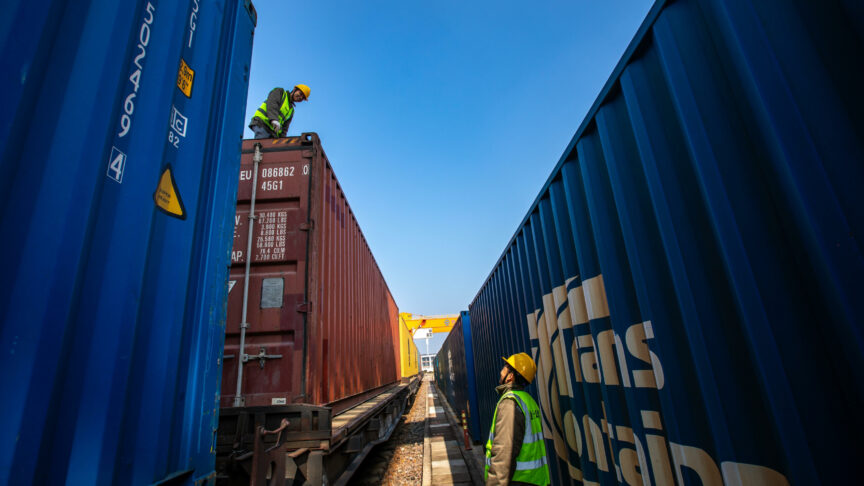Why the Norwegian EU option is best left to Norway
The Norwegian model is lauded as an ideal for British EU integration but there are deep flaws in Norway's relationship with the EU. The model is complex and costly, as well as problematic both in terms of democracy and national interest.
As the EU debate intensifies in the UK there has been increased interest from British Eurosceptics in the Norwegian version of European integration. This is perhaps understandable. Norway has stayed out of the European Union, and seems to manage quite happily, reaping the benefits of the single market without the aggravations of membership. To many British Eurosceptics that must seem like the perfect deal.
Well, it is not. On closer examination, the ‘Norwegian option’ is not an example to be followed, but should rather serve as a warning about how difficult a ‘half in; half out’ approach to Europe is. While Norway is formally outside the EU, in reality we are deeply integrated but without the rights of representation. The model is complex and costly, as well as problematic both in terms of democracy and national interest.
Just how complex was demonstrated by an independent 900-page report that we were involved with that reviewed all of Norway’s agreements with the EU. It was a bit of a reality check for most Norwegians, showing just how integrated we are into EU law and policy.
Back in 1960 the European Free Trade Association was created as an alternative to the European Community, and the UK and Norway were partners in European policy. Our paths split when the UK joined the EC in 1973 while Norway stayed in the EFTA. But the split was not all that large. Inside the EU, the UK became one of the least integrated and interested members. Outside, Norway became by far the most closely integrated third country. The difference in substantive integration is small: both countries are outside of the eurozone; the UK participates in some areas that Norway does not, and on the other hand Norway is fully integrated into the Schengen agreement on immigration, border control and police cooperation, unlike the UK.
A key part of our Europe review report was trying to work out what the consequences of this were for Norway over the last two decades. One finding was that the degree of Europeanisation is far larger than anyone has been aware of. Norway has taken more than three-quarters of EU law and policy, and this has had tremendous effects on the national political and legal system. Another main finding was that integration has had largely beneficial consequences – not just for the economy, but also for the labour market, the financial markets, social rights, the environment, regional development, research and development, justice and home affairs and a number of other areas.
The real lesson to be learned from Norway is that for a modern European country with an open economy there is nowhere to hide from the EU. European integration is driven by of a number of economic, technological, political and other processes that go much deeper than the issue of formal membership (or not). Even outside of the EU, Norway has not been able to resist the field of gravity of Brussels, and it has not been in the national interest to do so.
As some will continue to hold up Norway as a model for how the UK could reimagine its own relationship with the EU, it is worth examining exactly what this involves. First of all the model is very complex, consisting not only of the main European Economic Area agreement, but also of a patchwork of 73 other agreements. The common feature is integration without representation. Through the agreements Norway is in effect obliged to implement new law and policy coming from Brussels, but without any say in the decision-making processes. A veil of formal sovereignty hides the transfer of real powers, creating a special kind of democratic deficit.
This deficit is clear also in domestic politics. As Norwegians do not participate in EU decision-making they have few incentives to openly discuss European affairs. The present model is a compromise between the “yes” and “no” camps, and most politicians to not want to rock that boat. The result is that debate on European integration is discouraged, dampened and distorted. Paraphrasing a well-known British politician, we conclude our report by stating that there are few areas of Norwegian democracy today where so many know so little about so much as is the case with Norwegian European policy.
The fundamental logic of the Norwegian model – not wanting to lose the benefits of dealing with Europe, but also knowing that a majority of the electorate is against formal EU membership – might seem enticing for many in Britain. From a Norwegian point of view the model is bearable, even if it comes at a high price in terms of democracy. But Norway is a small and rather rich country with limited ambitions to influence European policy. The Norwegian solution to Europe is not one that we would recommend for others.
This article first appeared in The Independent
Fredrik Sejersted and Ulf Sverdrup are co-authoring a ECFR report on the Norwegian model, due out in October. Fredrik is the director of the Centre for European Law at the University of Oslo and Ulf is the director of the Norwegian Institute for International Affairs (NUPI).
The European Council on Foreign Relations does not take collective positions. ECFR publications only represent the views of their individual authors.


